Mary Elizabeth Theakston is my Great Grandmother and because of our ancestral link, she stands so incredibly close but (frustratingly) just out of my reach. She is a woman who I look upon as one who held many secrets; one who did not divulge the details of her past to many people. There is so much of a mystery about her that my curiosity is often heightened to a point where I’ve daydreamed of sitting down with her in the hope that she’d tell me all. But with daydreams being only daydreams I’ve resigned myself to gathering information from all areas in order to slowly put the pieces of the puzzle together and hopefully obtain a clearer picture of what her early years were like.
1898
The hereafter holds no terrors for any one who has panted through the past week in Perth. Even the mercury had to crawl through the top of the glass to cool itself, and pyjamas formed the most rational dress for those who could not afford to sit all day in a bath of cold water with a chunk of ice on the head.
At a time when air conditioning was only something one could dream about, relief from the hot Western Australian February summers was almost non existent. The temperatures in mid February soared to maximums of 39°C and the people of Perth and surrounding areas tried in vain to cool themselves. Adding to their woes, plagues of mosquitoes stormed through their homes and increased the discomfort of trying to sleep during the heat. Relief finally arrived in the afternoon of 13th February when the ‘Fremantle Doctor’ (which had been absent during the heatwave) lazily made an appearance and provided a welcome cool breeze.
It was also on this date, amidst the heat, mosquitoes and frustration, that Edith Alice Maud Theakston gave birth to a little girl, my Great Grandmother, Mary Elizabeth Theakston. Despite her normal residence being Short Street in Fremantle, Edith’s labour took place in, what was then, a rather remote location: Rockingham. Mary came into this world in the Postans family home (which today would’ve been located in Hope Valley) with the assistance of a young, 18 year old woman, Hannah Postans. Hannah’s 27 year old brother, Frederick Stephen Postans, was a further witness to the birth.
It is at the very beginning that herein lies the first mystery, conspicuously absent from Mary’s birth certificate was the name of her father. It is this absence that adds further weight to possible reasons as to why Edith gave birth in such a remote location, away from her family and home town. Mary was illegitimate. It is of course possible that Edith, while heavily pregnant, just happened to be passing by when the onset of labour halted her travels but in a world where pregnancy before marriage was severely frowned upon, I personally can’t help but wonder whether Edith was purposely sent away to live with the Postans in order to give birth far away from the curious eyes of the Fremantle locals (many of whom would’ve known her).
The absence of a father begs the first question: who was he? Why did Edith choose to not give his name when she registered the birth? Was the man who fathered Mary completely unknown to Edith? Were there unhappy circumstances surrounding the conception? Was he known to Edith but she chose to be discreet?
Nevertheless, Edith did not put Mary up for adoption and instead brought her home with her, and (by all appearances) decided instead to call her daughter, Elizabeth Veronica (her name was registered as Mary Elizabeth so I shall continue to call her Mary so as not to add confusion).
Mary/Elizabeth soon became known to everyone as Vera (a nickname probably derived from her middle name). During her very early years, it’s likely she grew up surrounded by lots of people; her mother, Edith, grandmother, Emily Theakston (nee Freeman), grandfather, Hugh James Theakston (until 1902), her aunts and uncles as well as the people coming and going who lived at the boarding house on Short Street in Fremantle. Her life in Fremantle, how she was treated and how she was raised as a child is the second mystery. No one seems to know anything, so, to gain some perspective of what was going on throughout her life, I will, at times, look to family members.
Two years after Mary’s birth, Edith (living at Short Street) was still single and decided that she’d “walk out” with a heavily built man by the name of George Crick. An angry, violent man, the pair began arguing which resulted in George striking Edith in the mouth. Her sister, Florrie intervened and George swiftly turned on her, punching her in the eye. Where was Mary when all this was occurring? Who cared for her when Edith went out?
Edith’s singlehood eventually came to an end on 19 March 1902 when she married Joseph Sedgwick Attwood; a 27 year old man who had previously been a Private in the West Australian Mounted Infantry and had participated in the Boer War in South Africa. They were married in ‘The Church’ in Fremantle according to the rites and ceremonies of The Church of England. Witnessing the marriage were Edith’s brother, Hugh James Theakston and Robert Crossfield, a man from South Australia who may have been brought up by Edith’s parents. There was no notice in the paper of either the engagement or wedding and no write up about the nuptials themselves. By all appearances it was kept rather’ ‘hush hush’ which is befitting considering Edith, at the time, was an unmarried mother.
Mary was four years old and now had a stepfather to help care for her. As it turns out, Edith’s marriage was quite a pivotal point in Mary’s life. Whether or not Joe was her birth father may never be known but what is known is that Mary seems to have taken on Joe’s surname, Attwood.
Continuing to grow up as Vera Attwood, Mary lived with her mother and Joe in Fremantle on 25 Cantonment Road (not far from grandmother, Emily who lived on 22 Cantonment Road) up until 1904. At this point, she was six years old and she was required by law to attend school where she would learn all the basics such as reading, writing and arithmetic. Along with her schooling, it’s likely Edith would’ve also given Mary instructions on matters relating to ‘keeping house’ such as sewing, ironing or cooking.
Students at the Princess May School in 1908 – did Mary attend this school?
While Mary was experiencing the excitement of attending school for the very first time, Edith was finding that people (no matter how many years may have passed) still liked to gossip and speculate. In September 1906, a Mrs Elsegood was talking about Edith’s reputation to other people. Whatever it was she was saying, Edith deemed it “false and defamatory slander” and took decisive action. Whatever that action was, it worked. A letter was drawn up which retracted the statements and apologised and Mrs Elsegood signed it; giving Edith permission to print it in the papers in order to show people that she was in the wrong.
Throughout the 1900s, Mary, her mother Edith and stepfather Joe, made several moves around Fremantle. From 1905 to 1907 they lived on 34 Old Cemetery Road and then from 1909 to 1910 they lived on 34 Alexander Road. It wasn’t until 1911 they moved into a house at 1 Church Street in Fremantle which would become the family’s long-term residence.
1 Church Street which today is Stevens Street
Aged 13, Mary was now a teenager and for the next ten years would be slowly growing from a girl into a young woman. Though she remained living at the Church Street house, further information about Mary during this time is very scarce. What was going on in Fremantle and Western Australia during this time? How would it have affected Mary’s life?
On 30 January 1911, the people of Fremantle celebrated Anniversary Day (now known as Australia Day) by holding a Children’s Gala at South Beach. Approximately 15,000 people arrived from Fremantle and even from other suburbs such as Perth and Midland Junction; travelling by either train or tram to attend the Gala and participate in the festivities. Mary would’ve been young enough to join in the fun and games and perhaps received some fruit or sweets that were handed out on the day. Could she have attended the popular event with Edith and Joe?
For the delight of the children there were foot races, skipping races, sack races, and Siamese-twins races, swimming events, and duck hunts, while sundry other minor attractions demanded the attention of the youngsters. Fruits and sweets were distributed as far as the supplies would go, but the demand was in excess of the supply, which in itself was not small. Handed out to the clamouring children were 7,000 bags of lollies, 36 cases of fruit, and five cases of toys, while cash prizes of small amounts were also paid over to successful competitors.
A section of the crowd enjoying Anniversary Day at South Beach.
In 1912, Mary turned 14 and under the Western Australian laws was no longer required to attend to school. Assuming she did finish school at this age, her place would now be within the family home at Church Street where she would help her mother with various chores. Perhaps she was also starting to take an interest in the latest fashions and admired what was printed in the newspapers in the ladies’ section.
Designs for three smart hats printed in the Sunday Times – May 1912.
The onset of war in 1914 was probably a time in Mary’s life which was both scary and filled with uncertainty. At the start she was 16; old enough to know what it meant but perhaps young enough to be a little naive as to the aftereffects. The Australian population in itself was enthusiastic for war and many men of all ages and backgrounds immediately enlisted to fight for the British Empire.
While men went away to fight, some women took up the jobs that became vacant and there were also some who volunteered as nurses or war correspondents and like the men, saw the impact of war first hand. Many however and most likely in Edith and Mary’s case, remained at home. Staying home didn’t necessarily mean that they did nothing. Some women visited and helped care for wounded soldiers, they held confectionary sales, rattled collection tins, organised fetes, baked cakes, organised care packages and more often than not, they knitted. Could Mary have helped in ways such as this while at home?
It was the death that came with war that would’ve been felt the most within the community. Families lost husbands, sons, cousins and friends and the whole of the country grieved for the lives that were tragically cut short. Mary would’ve seen the devastation first hand. Her uncle by marriage, Herbert Howard Liverton enrolled in the Australian Imperial Forces on 28 February 1916. Just over a year later on 2 April 1917 (four days before his seventh wedding anniversary), he was killed in action while in France. Mary’s aunt, Ivy Gladys Rose Theakston was now a widow.
Private H. H. Liverton
A year later each member of the Theakston family placed notices in the paper in memory of Herbert’s death. The Attwood family was no exception with the notice stating that it was “Inserted by Edie Vera, and Joe Attwood”.
It was during this same year on 11 November 1918 that the Great War finally came to an end. There had been four years of fighting and throughout that time Mary had shed her teenage years. She was now 20 years old.
Throughout 1919 the soldiers slowly returned to their homes and various repatriation organisations were set up in order to help them learn new skills, obtain employment or cope with their injuries. Despite the war coming to an end, life as everyone knew it would never truly be the same as it was before the war. The innocence of the nation was lost.
Mary’s life would’ve continued on in much the same way. It’s likely she was still at the Church Street residence with her mother, Edith and stepfather, Joe and (if she didn’t have some sort of employment) it’s also likely she was still helping around the house.
After a very long hiatus from records we finally see Mary reappear in 1921 at age 23. On 6 November, Emily Theakston (nee Freeman) the matriarch and long running boarding house keeper on Short Street died suddenly from a heart attack at the age of 65. Her unexpected death sent shockwaves through the Theakston family (newspaper notices placed by her children appear year after year in memory of her death). Her funeral was held two days later with her children and grandchildren in attendance. Amongst those grandchildren listed was “Vera Attwood”.
It is this last entry in the newspaper that I choose to close on the story of the early years of Mary Elizabeth Theakston’s life. Unfortunately (and perhaps remarkably) she never spoke to anyone about her upbringing or her early years and no one ever asked her questions about it (which may also simply be a reflection of the time). By all appearances it seems to me, from around this point forward, as if something happened. Perhaps Mary found out the truth of her illegitimacy from her mother. Perhaps she found out that her name was actually Mary Elizabeth and not Elizabeth Veronica. Perhaps she’d been living under the lie that Joe was her father and much to her great shock, was told that he wasn’t. It is looking to the records that helps tie the story of Mary/Vera together.
The years after 1921 are very important because of the evidence that arises. At some point in 1922 or 1923, Mary met Arthur Harold Harwood. He obviously swept her off her feet because in 1923 she had a son, Lindsay Gordon Harwood. She remained with Arthur and they had another child, this time a daughter, Ailsa Katharine Harwood on 26 September 1924 in East Coolgardie. She married Arthur on 29 July 1925 and on 13 January 1926 she gave birth to Arthur William Harwood.
Throughout all these years Mary’s mother was most likely suffering from the illness pernicious anaemia. At the time there was no known cure of the disease and on 17 August 1927 she passed away at only 50 years of age. She was buried the next day in Fremantle Cemetery and her obituary appeared in The Daily News a few days after that. Edith was highly respected within the district and was noted to have a “bright and genial disposition” which helped her make a large circle of friends. The obituary also states that she was survived by one daughter. This daughter was Mary and she was not listed as being a part of the funeral cortege.
It is Edith’s death certificate which lists the full name of her daughter: Elizabeth Veronica. But it was an electoral roll which relates to Mary which slides the last piece of the puzzle in place. She first votes on 19 December 1931 in the Australian Federal Election. Living at 4 Benporath Street in Victoria Park, she gave her name: Vera Harwood.
The records further indicate that there was some confusion as to what Mary’s name actually was. Once, she voted as Vera. Twice, she used the name Ivy. In later years she used her registered name, Mary Elizabeth. Certificates for her future twelve children (four of whom died in infancy) show that sometimes she was Ivy, sometimes she was Mary Elizabeth, sometimes she used the surname Theakston and sometimes Attwood. As an example, my Nan’s death certificate states her mother’s name to be Ivy Attwood.
The possibility that she was adopted has also been pondered but I feel that this is something that is doubtful. The idea of a married couple adopting a child was not uncommon but the idea of a single young woman adopting a child in an era where children before marriage was frowned upon is highly unreasonable. There’s also the evidence of Mary’s grandmother, Emily. Emily Freeman was most likely born Emily Head; the illegitimate daughter of Ellen Head and William Dale. Though by all appearances she grew up under the care of Bell Freeman (and adopted his surname) it looks as if she still knew who her mother was and who her half siblings were. Perhaps it was Emily who was concerned enough to send her daughter away to escape gossip but being aware of her own situation and upbringing, did not wish Edith to give her baby up entirely (see my previous post, Deciphering Clues # 1 and Deciphering Clues # 2).
The truth is, despite all the questions, I haven’t got an answer. Mary remained silent regarding her past for her entire life and it may be that the truth of her childhood, her mother and father, the life she lived before she met Arthur and even the reason why she appears to have never seen her family again will forever remain a mystery, and I will have to be content with imagination.
Mary Elizabeth Theakston (centre) surrounded by family and friends.
Sources:
- Mary Elizabeth Theakston’s birth certificate (registration year: 1898; registration number: 2228).
- Edith Alice Maud Theakston and Joseph Sedgwick Attwood’s marriage certificate (registration year: 1902; registration number: 708).
- Edith Alice Maud Attwood’s death certificate (registration year: 1927; registration number: 218).
- 1898 ‘LIES AND OTHER FACTS.’, West Australian Sunday Times (Perth, WA : 1897 – 1902), 13 February, p. 4, viewed 3 September, 2013, http://nla.gov.au/nla.news-article32630537
- 1898 ‘THE WEATHER.’, The Daily News (Perth, WA : 1882 – 1950), 14 February, p. 4, viewed 3 September, 2013, http://nla.gov.au/nla.news-article82073904
- 1900 ‘FREMANTLE POLICE COURT.’, The West Australian (Perth, WA : 1879 – 1954), 6 April, p. 6, viewed 4 September, 2013, http://nla.gov.au/nla.news-article23832838
- Information related to school ages obtained from the State Records Office of Western Australia (http://www.sro.wa.gov.au/archive-collection/collection/education-and-school-records).
- 1906 ‘Advertising.’, The Daily News (Perth, WA : 1882 – 1950), 21 September, p. 6, viewed 4 September, 2013, http://nla.gov.au/nla.news-article82457142
- 1911 ‘THE HOLIDAY AT FREMANTLE.’, The West Australian (Perth, WA : 1879 – 1954), 31 January, p. 5, viewed 20 September, 2013, http://nla.gov.au/nla.news-article26302029
- 1911 ‘A SECTION OF THE CROWD AT THE CHILDREN’S GALA, SOUTH BEACH, FREMANTLE[?] ON MONDAY.’, Western Mail (Perth, WA : 1885 – 1954), 4 February, p. 27, viewed 20 September, 2013, http://nla.gov.au/nla.news-article38366243
- 1912 ‘Latest Fashions.’, Sunday Times (Perth, WA : 1902 – 1954), 5 May, p. 30, viewed 20 September, 2013, http://nla.gov.au/nla.news-article57731068
- 1914 ‘PICTURS of the War.’, Sunday Times (Perth, WA : 1902 – 1954), 9 August, p. 14, viewed 20 September, 2013, http://nla.gov.au/nla.news-article57783417
- World War I Conscription in Australia (http://en.wikipedia.org/wiki/World_War_I_conscription_in_Australia).
- 1917 ‘THE LATE PRIVATE H. H. LIVERTON.’, Chronicle (Adelaide, SA : 1895 – 1954), 19 May, p. 40, viewed 20 September, 2013, http://nla.gov.au/nla.news-article87609050
- 1918 ‘Family Notices.’, The West Australian (Perth, WA : 1879 – 1954), 3 April, p. 1, viewed 15 November, 2013, http://nla.gov.au/nla.news-article27473800
- 1921 ‘Family Notices.’, The Daily News (Perth, WA : 1882 – 1950), 11 November, p. 5 Edition: THIRD EDITION, viewed 15 November, 2013, http://nla.gov.au/nla.news-article83118310
- Ancestry.com. Australia, Electoral Rolls, 1903-1980 [database on-line].
Related articles
- Frederick George Campion Postans – of the ‘Golden Generation’? (postansfamilyproject.wordpress.com)

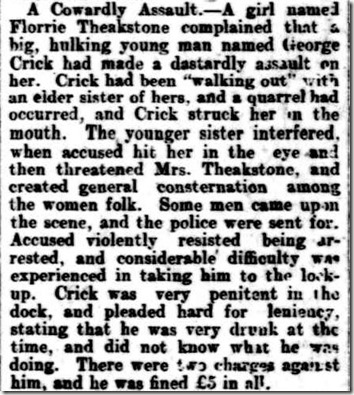

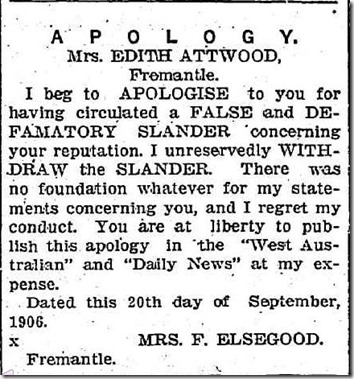
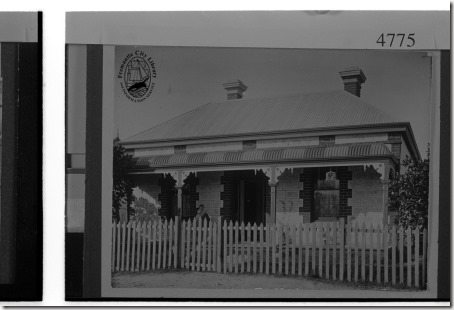
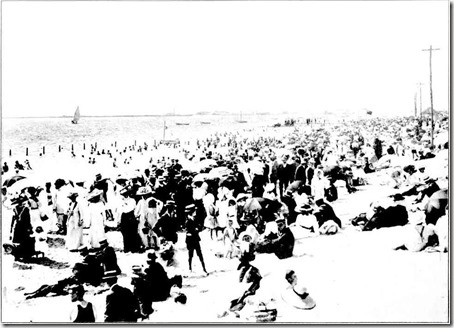


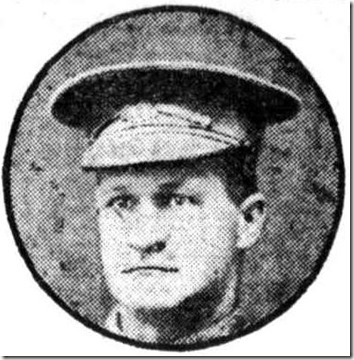

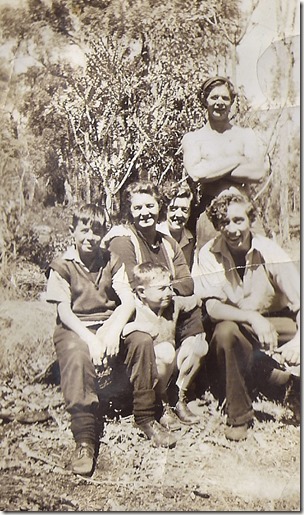

Very well written Jessica
Thanks Mum!
Meticulous research as usual Jessica! Just spent a few days with my mother and aunt but unfortunately the name Theakston did not mean anything to them. Ah well – we’ll keep looking; that’s what family history research is all about!
Thanks Neville! Never mind. Perhaps it’s something that’s been forgotten after all these years. Thanks also for asking. Yep, we’ll keep at it – never give up! 🙂
Wonderful story Jess. I’m sure you’ll uncover more pieces of the puzzle eventually – nothing stays hidden forever. Keep digging!
Thanks Heather! I’m sure I will too; I’ve just got to remain patient. 🙂